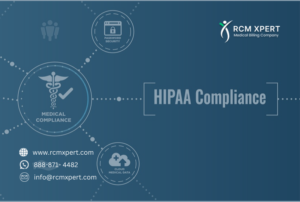Have you ever wondered what happens after you leave the dentist’s chair? Beyond the clean teeth and bright smiles, a complex process ensures your dentist gets paid for their services. This process is known as dental billing. This article will dive deep into dental billing, exploring its intricacies and importance in the dental care ecosystem.
The Basics of Dental Billing
Dental billing is submitting and following up on claims with health insurance companies to receive payment for services rendered by a dental professional. It’s a crucial aspect of running a dental practice, ensuring that dentists are compensated for their work while patients receive the coverage they’re entitled to.
Why is dental billing critical?
- It ensures timely payment for dental services
- It helps patients maximize their insurance benefits
- It maintains the financial health of dental practices
- It facilitates accurate record-keeping for both patients and providers
Now that we’ve covered the basics, let’s explore how dental billing works.
The Dental Billing Flow: From Treatment to Payment
Understanding the dental billing flow can help patients and professionals navigate the process more effectively. Here’s a step-by-step breakdown:
1. Patient Registration and Insurance Verification
The billing process begins even before you sit in the dental chair. You’ll be asked to provide your insurance information when you first visit a dental office. The dental office will then verify your coverage to understand what services are covered and to what extent.
2. Treatment and Documentation
As your dentist performs the necessary procedures, they or their assistant will document every service provided. This documentation is crucial for accurate billing.
3. Coding the Services
After your visit, a dental biller or the dentist will translate the documented services into standardized codes. This process, known as dental billing coding, uses specific codes for each procedure, making it easier for insurance companies to process claims.
4. Preparing and Submitting the Claim
Using the codes and patient information, the dental biller prepares a claim. This claim is submitted to your insurance company, often electronically, through dental billing software.
5. Claim Processing by the Insurance Company
The insurance company reviews the claim, verifies coverage, and determines the amount they will pay based on the patient’s plan.
6. Payment and Explanation of Benefits
If the claim is approved, the insurance company sends payment to the dental office and an Explanation of Benefits (EOB). This document breaks down what was covered and why.
7. Patient Billing
If there’s a remaining balance after insurance payment, the dental office will bill the patient for the difference. This is sometimes referred to as balance billing in dental practices.
The Role of Dental Billing Software
In today’s digital age, dental billing software plays a crucial role in streamlining the billing process. These programs offer several benefits:
- Faster claim submission
- Reduced errors in coding and data entry
- Easy tracking of claims and payments
- Integration with patient records and scheduling systems
- Automated patient billing and reminders
Many dental practices find that investing in a robust dental billing program significantly improves their billing efficiency and accuracy.
Common Challenges in Dental Billing
Despite the availability of advanced tools, dental billing can still be complex. Here are some common challenges faced by dental billing experts:
1. Insurance Claim Denials
Claims can be denied for various reasons, including incorrect coding, missing information, or services not covered by the patient’s plan.
2. Changing Insurance Policies
Insurance companies frequently update their policies, requiring dental billers to stay informed and adapt their practices.
3. Patient Education
Many patients don’t fully understand their dental insurance coverage, leading to confusion and potential payment disputes.
4. Keeping Up with Coding Changes
Dental coding systems are regularly updated, requiring ongoing education for dental billers.
Is Dental Billing Different from Medical Billing?
While there are similarities, dental billing, and medical billing have some key differences:
- Coding Systems: Dental billing primarily uses CDT (Current Dental Terminology) codes, while medical billing uses CPT (Current Procedural Terminology) codes.
- Insurance Plans: Dental insurance plans often have lower annual maximums and different coverage structures than medical plans.
- Frequency of Procedures: Dental procedures are more frequent and routine than medical procedures.
- Cosmetic Procedures: Dental billing often involves more cosmetic procedures, which insurance may not cover.
Some practices use dental medical billing software to handle both types of claims, especially when offering services that overlap with medical care.
The Rise of Dental Billing Outsourcing Companies
Given the complexities of dental billing, many practices are turning to dental billing outsourcing companies. These specialized firms offer several advantages:
- Expertise: They employ trained dental insurance billers who stay up-to-date with industry changes.
- Efficiency: Outsourcing can lead to faster claim processing and improved cash flow.
- Cost-Effectiveness: It can be cheaper than maintaining an in-house billing department.
- Focus on Patient Care: Outsourcing allows dental professionals to focus more on patient care than administrative tasks.
Dental Insurance Billing Services: What to Look For
If you’re considering outsourcing your dental billing, here are some key features to look for in dental insurance billing services:
- Experience with various insurance providers
- High claim acceptance rates
- Transparent reporting and analytics
- HIPAA compliance and data security measures
- Excellent customer service and support
The Future of Dental Billing
As technology continues to evolve, so does the field of dental billing. Here are some trends shaping the future:
- Artificial Intelligence: AI is used to predict claim outcomes and identify potential denials before submission.
- Teledentistry: With the rise of remote dental consultations, billing systems are adapting to handle these new claims.
- Patient Portals: More practices offer online portals where patients can view their bills, make payments, and check their insurance benefits.
- Blockchain: This technology could streamline the verification process and reduce fraud in dental billing.
Conclusion: The Importance of Understanding Dental Billing
Whether you’re a patient, a dental professional, or someone considering a career in dental billing, understanding this process is crucial. It helps patients make informed decisions about their dental care and insurance. For dental professionals, efficient billing ensures the financial health of your practice, allowing you to focus on what matters most – providing excellent dental care.
Remember, dental billing is more than just processing payments. It’s about ensuring fair compensation for valuable healthcare services, maximizing patient insurance benefits, and maintaining the financial ecosystem that allows dental practices to thrive. Understanding how dental billing works can contribute to a more transparent and efficient healthcare system.
So, the next time you visit your dentist, take a moment to appreciate the complex process that happens behind the scenes. Dental billing plays a vital role in keeping those bright smiles coming from the dental biller working diligently on insurance claims to the sophisticated software tracking every procedure.














